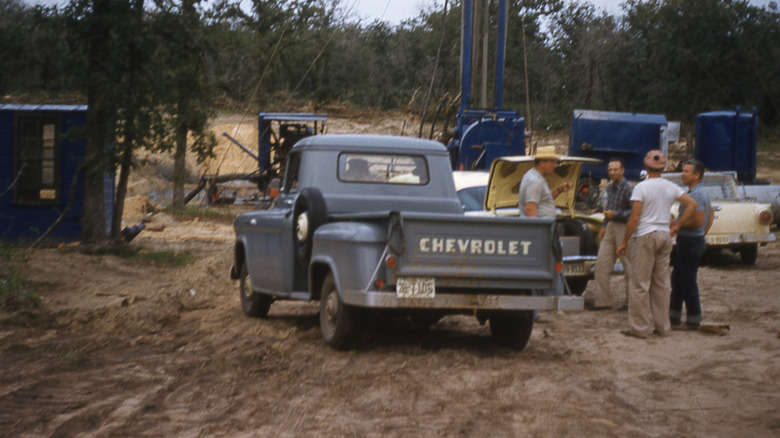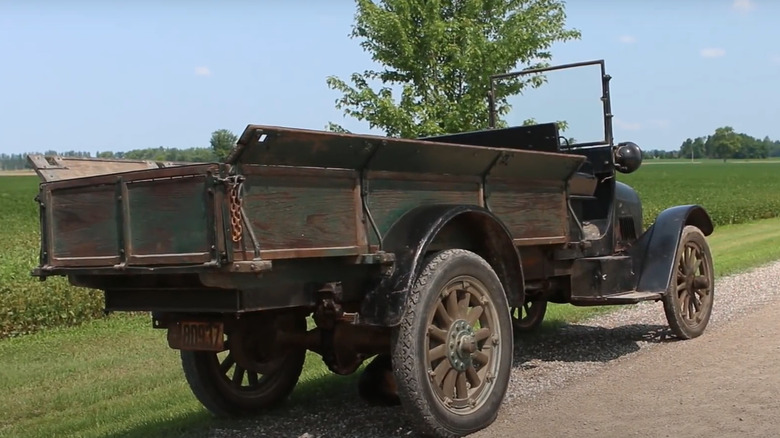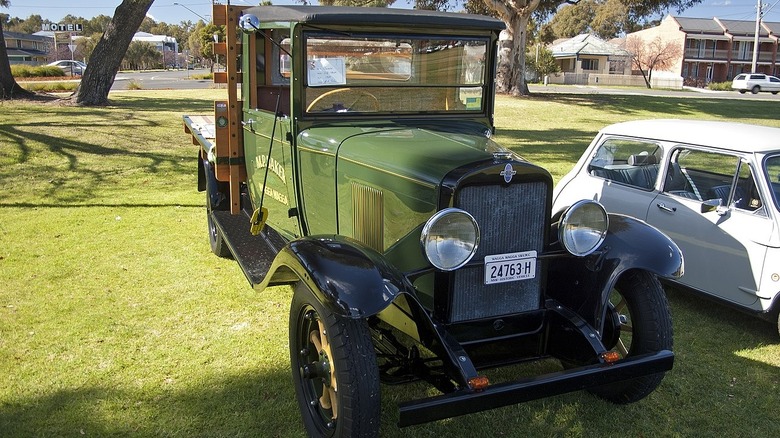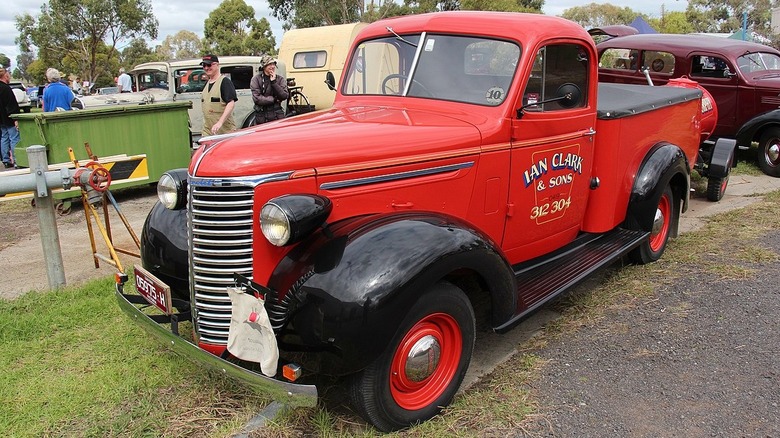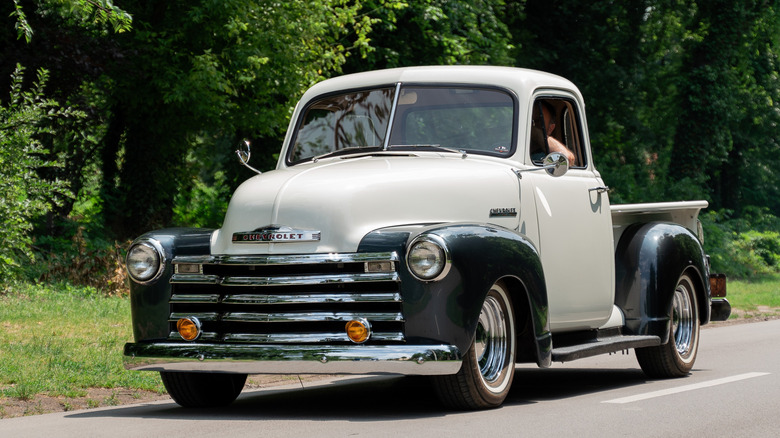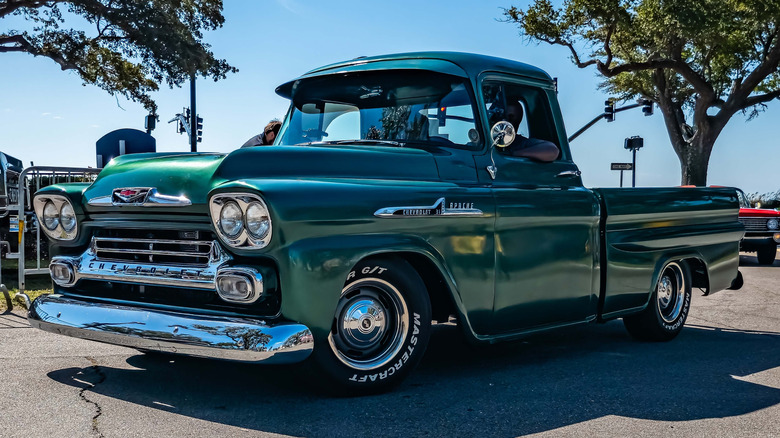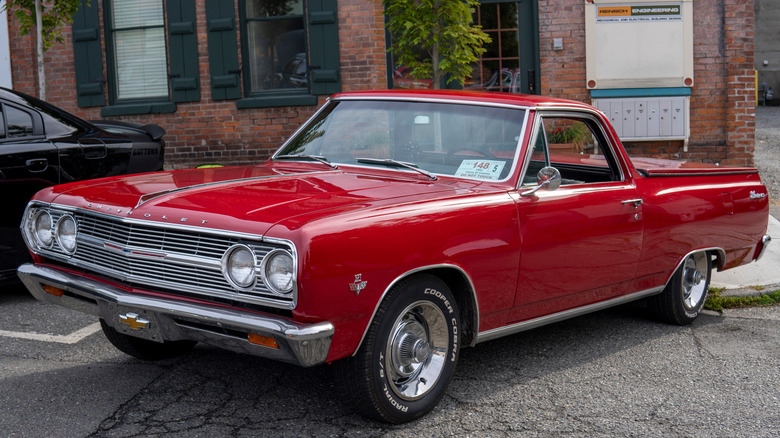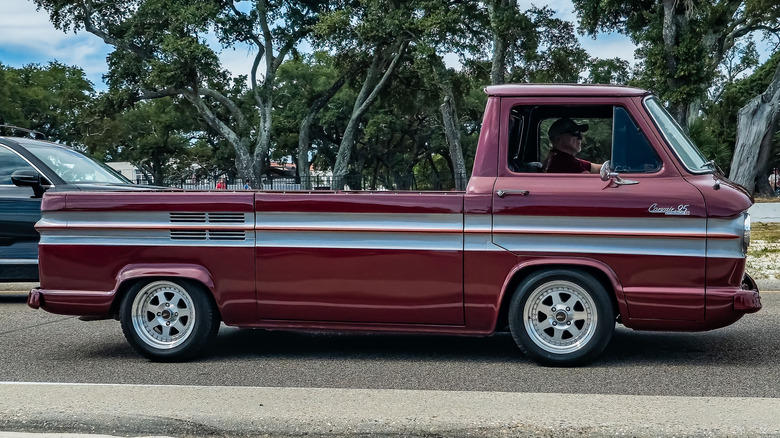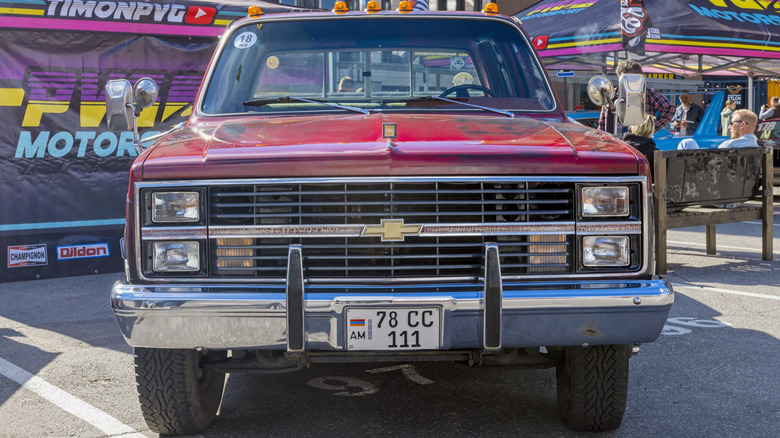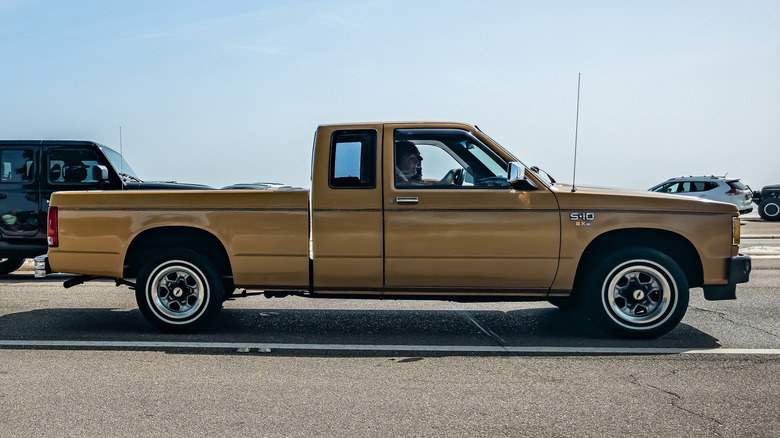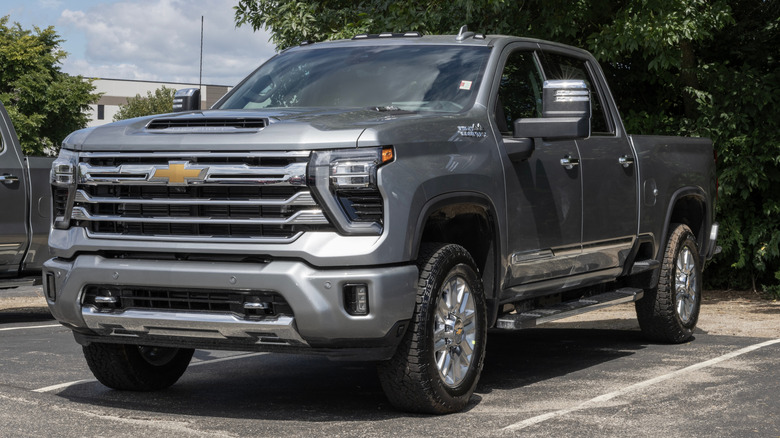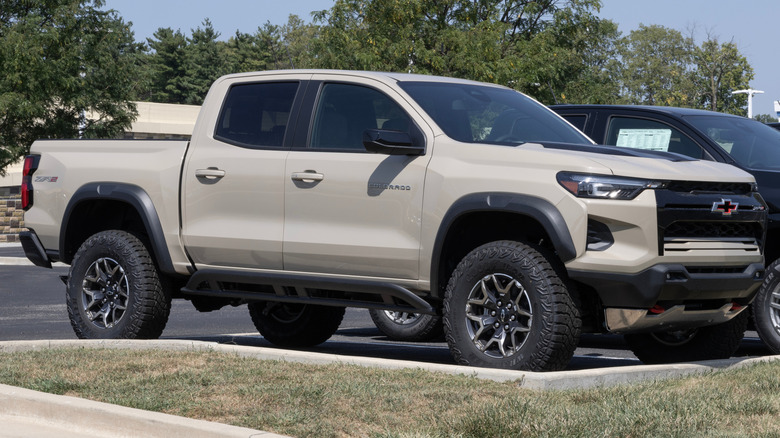Chevy Truck History: 11 Major Models From The Last Century
Chevrolet is among the legendary automakers. William C. Durant and his business partner, Swiss racing pilot Louis Chevrolet, launched the Chevrolet Motor Company in November 1911. With over 110 years of automotive design and production history, Chevrolet was among the few car companies to stand the test of time.
Chevrolet's history of building pickup trucks is nearly as long as its existence as a company. The early days of auto manufacturing were akin to the opening moments of a horse race, with everyone vying for the lead. The competition was fierce, and competitors had to keep up or fall behind. A new and innovative vehicle centered around this early automotive competition: the pickup truck.
The early American mass-produced pickup trucks were a unique breed, ideally suited for their time and place. Rugged, affordable, and repairable, they were versatile vehicles capable of everything from farming to traversing the vast distances of the world's expanding roadways.
In the earliest days of mass production, companies like Ford and Chevrolet sold chassis-only pickup trucks, leaving the customer responsible for procuring and installing a cab and body.
Chevrolet first put its pickup truck foot forward in 1918. Directed at competing with the recently released 1917 Ford Model TT, the Chevrolet Model T marked Chevrolet's entry into pickup truck history.
1918: The Model T is the first Chevrolet pickup.
Though Ford's first production Model T is more famous than Chevrolet's Model T (for truck) pickup, Chevrolet's version is nonetheless a major Chevrolet model if for no other reason than it was the very first.
Chevrolet's first purpose-built truck, the Model T, was available as a chassis only or with an express body. Van bodies were also available, but the customer was responsible for organizing and installing a body based on the pickup's intended use.
The core of the matter was a 224 cubic-inch inline four-cylinder making 36 horsepower. It might not seem much by today's standards, but that was plenty of deployable power in an era when a farmer might have been using three dozen horses to do the same work the previous season.
The Model T pickup trucks, though rudimentary by today's standards, were a game-changer for rural communities. They provided a work multiplier that extended the range of tasks a growing nation could undertake, fundamentally altering life in the hinterland.
The Chevrolet Model T, the first of its kind, marked the beginning of a century of truck building from one of America's most beloved brands. Its enduring legacy is a testament to its historical importance.
1929: The International Series introduced the workhorse Stovebolt engine.
The pickup truck would remain, and options for new engines and technological innovations abounded. In 1929, Chevrolet introduced an engine that would power Chevy trucks through three decades before finally being set aside in 1955 in favor of the burgeoning V8s.
The Chevrolet Stovebolt engine got its nickname from the bolts that made the top of the engine look like a stove pipe chimney. The 1929 Chevy International Series AC Light Delivery truck got one of the new engines. With a displacement of 194 cubic inches, the overhead valve straight-six made 46 horsepower and 125 lb-ft of torque.
With a steady engine under the hood, Chevrolet purchased the Indianapolis Martin Parry fabrication plant in 1930. Pickup trucks would have official General Motors-fit and produced bodies.
The 1930s were a time of fierce competition, and Chevrolet was not one to be left behind. To keep up, they began offering factory-installed steel boxes and other amenities and updates. In 1937, Chevrolet introduced an upgraded Stovebolt nicknamed the "Blue Flame." This 216 ci straight six nearly doubled the 1929's output with 85 horsepower, a significant upgrade that kept Chevrolet competitive.
The 1930s were a transformative period for the automotive industry, particularly for pickup trucks. As these vehicles became more commonplace, builders began to focus on functionality and aesthetic appeal. Boxy light delivery trucks like the AC gave way to the now iconic design cues of some of America's most classic pickups.
[Featured image by Bidgee via Wikimedia Commons | Cropped and scaled | CC BY-SA 3.0 AU]
1936 to 1947: Chevrolet trucks range from American cities to European battlefields.
In 1927, General Motors instituted an Art and Colour Section to study the impact of color and artistic form on auto design. By 1937, its innovations had trickled down from the premium Cadillac brand. GM doubled down on the work begun by the Art and Colour Section by renaming it the General Motors Styling Section and creating formal design studios for its many brands, including Chevrolet.
The 1938 Chevrolet half-ton, the first truck developed by the new studio, marked a clear departure from the International Series of the 1920s. It featured curved and flared fenders, an enclosed color-matched cab available in a variety of colors, and is still a luxury on non-premium brands.
The United States Government ordered manufacturers to cease production of civilian pickups in 1942. Chevrolet contributed its expertise in building durable 4-by-4s to the American war effort during the Second World War. Chevrolet devoted ten assembly plants to putting out ton-and-a-half trucks that would churn through the mud of European battlefields.
With the end of the war, Chevrolet quickly resumed civilian pickup production. The next-generation Advance Design Truck would propel Chevrolet into a new era in the 1950s.
[Featured image by Sicnagvia Wikimedia Commons | Cropped and scaled | CC BY 2.0]
1947 to 1954: The new Advance Design Trucks drove America into a new era.
The Advanced Designed Pickup Truck emerged in 1947 as a fresh start after a dark period.
Chevrolet used a Unisteel cab welded into a single uni that could accommodate three passengers. The faithful 216 ci Stovebolt still chugged under the hood. Instead of a new engine that would not arrive until 1954, Chevrolet focused on comfort and aesthetics.
The cab was designed with the operator in mind. More leg room, improved visibility, adjustable, cushioned seats, scoop ventilators, and an optional heater/defroster made the pickup experience less stark. It included toolbox storage, large glove compartments, and push-button radio operation.
The body was all bubbles and curves, not so different from the pre-war models that it was unrecognizable but unique enough to grow into bona fide classic status. Perhaps its most incredible and enduring honor was its coveted inclusion on SlashGear's list of the most beautiful Chevrolets ever designed.
As beautiful as it may be, the Advanced Design era was one during which pickup trucks were still used for work. Chevrolet offered three designations: the half-ton 3100, the three-quarter-ton 3600, and the one-ton 3800. The Advance Design Trucks nodded to comfort, but the pickups remained utilitarian vehicles and a major part of rural life.
The average used cost of $46,012 and the top sale price of $345,000 reflect the respect these trucks have earned as classics and collector's items.
1955 to 1959: Task Force trucks break out away from the Stovebolt engine.
The Chevrolet Task Force Trucks were developed between 1955 and 1959. Chevrolet envisioned its new Task Force Trucks as a step toward mainstreaming the pickup truck. No longer did pickups need to remain spartan utility vehicles.
The Advance Design line proved an iconic continuation of the pre-war trucks, but the Stovebolt design was nearly 30 years old. The Task Force trucks were some of the most impressive Chevy trucks ever. They offered amenities like Airmatic seating, improved seat springs, rubber floor mats, wrap-around visibility, and other comfort and safety upgrades.
Chevy again divided the Task Force into designations, including the 3100 and Fleetside. Shiny lollipop paint selections and two-tone options made the Task Force trucks' art deco-inspired lines look good enough to eat.
The first series of Task Force trucks came with a 235 ci inline six, making 123 horsepower, but the second series introduction of a 265 ci overhead cam V8 marked the Task Force as an entire new era of Chevrolet pickup. The age of the straight-six had been long and great, but the V8 had arrived to stay.
The Task Force pickups remain popular on the collector's markets, demanding an average of just over $50,000 in used sales.
1958: The El Camino begins 28 years of total production.
There is no way to review the major Chevrolet truck models from the last century without visiting the beloved El Camino. With the pickup trending toward car comfort, Ford introduced a car truck hybrid called the Ranchero in 1956.
Never to be outdone by a primary competitor, Chevrolet followed when it released the El Camino to the market on October 16, 1958. The first El Camino faltered; Chevrolet discontinued the nameplate within two years.
The El Camino returned in 1964 with a second generation based on the Chevelle platform. By the time the third generation arrived in 1968, the El Camino was a stylistic mutant: part pickup, part muscle car. A handful of 1970 SS models got the same LS6 454 in the Chevelle of that year.
Unlike the classic big block muscle cars that faded away through the 1970s, Chevy's pickup hybrid carried deep into the 1980s, up to a fifth generation before Chevrolet discontinued the El Camino after the 1987 model year.
The El Camino may not be the "truckiest" truck that ever trucked. Still, its impressive production run, passionate fanbase, iconic status, and, most importantly, that pickup bed qualify it as one of Chevrolet's most significant pickup models of the last century.
1961 to 1965: Corvair pickup piques the curiosity of the market.
The El Camino wasn't the only idiosyncratic car-truck hybrid knocking around Chevrolet's factories in the 1960s. A little remembered offshoot of the beloved Chevrolet Corvair also went the route of the pickup.
The end of the 1950s saw a rise in the popularity of the compact car. American manufacturers sought to reduce the size of standard offerings and power them with four or six-cylinder engines. Chevrolet took another tack, introducing the Corvair with a rear-mounted flat-six engine initially making about 80 horsepower, though those numbers would rise throughout the Corvair's nine-year career.
The Corvair arrived in 1960 as a passenger car, but Chevrolet had extensive plans for the platform. Aside from a van version, the Corvair also appeared as a pickup truck with some unique features. The Corvair pickup eliminated the passenger seats in favor of a 105-by-45-inch pickup truck bed. The rear of the bed was lifted to make room for the engine, and the Rampside iterations included a side-opening ramp.
The Corvair pickup started its career at the top and steadily declined thereafter. From an initial production of over 13,000, by 1965, that number had dwindled to nothing. The curiosity and rarity have made the Corvair pickups interesting to the classic market. Its average used value hovers around $28,000, and a top sale of $88,000 signals a healthy, if not outrageous, demand for the unique link in the evolutionary chain of Chevrolet trucks.
1960 to 2002: Chevrolet's C/K series of pickups carve a broad swathe in the market.
The Task Force pickups carried Chevrolet away from antiquity, but the C/K series pulled Chevrolet into modernity. Groundbreaking technology included a class-first independent front suspension and a drop–center frame that allowed for a shorter wheelbase and lower cab height. Chevrolet initially offered 250 and 292-cubic-inch straight sixes, and 283 and 327-cubic-inch V8s.
The second-gen, which joined the stable in 1967, offered more innovation and upgrades, including a 4-by-4 model and a powerful new 327 ci V8. With pickup competition at a fever pitch, manufacturers like Chevrolet and Ford continued upping the ante on performance, comfort, and capability to best the competition.
During the third generation C-series, between 1973 and 1987, the F-150 became the best-selling truck in America, a title Ford had not relinquished for over 75 years. Nonetheless, the C-series of that era included some of the best-looking square-body truck designs. Its longevity and popularity speak to its success. Overall, the C-series saw four generations of production between 1960 and 2002, with the final generation debuting in 1988.
Over their long history, the C-series trucks have come in different shapes and flavors. Alternate engine choices, drivetrains, interior options, and an enormous production run make them popular as restoration projects or even functional, working pickups.
The workhorse C-series carried Chevrolet into the 20th century when the Silverado would premier in 1999 to take up the baton.
1982 to 2004: the merits of the small pickup shine in the S-10.
Despite the Corvair's underwhelming career, Chevrolet wasn't finished with compact pickup trucks. The S10 debuted in 1982 as a diminutive pickup set to compete with Isuzu and Ford.
The first generation S10, produced from 1982 to 1993, was available in two-door and extended-cab configurations. It offered a variety of features, including two and four-wheel drivetrains and a range of in-line four-cylinder or V6 engines, catering to a wide range of buyers with different needs and preferences.
The second generation S10 arrived in 1994 with a new quad cab option. It included the choice between a 2.2-liter four-cylinder and a 4.3-liter V6 before eliminating the four-banger altogether for the 2000 model year.
The S10 enjoyed a quiet 22-year career stealing market share from the Ford Ranger before ultimately being usurped as Chevrolet's baby truck by the Colorado's 2004 release. The S10 is in that strange no man's land between being an old truck and becoming a future classic.
While car experts would pay an arm and a leg to predict the future of the S10 in terms of desirability, there's no telling if it will receive a resurrection in the used market. The average used S10 commands just under $13,000, while even the highest-selling specimen clocks in at a mere $30,000.
The S10 might not be spoken of in the same revered sphere as an antique International or Advance Design model, but no one can argue its place as a significant model in Chevrolet's history.
1999 and onward: the Silverado has been Chevy's full-sized truck option.
By the end of the 20th century, the C-series had served its purpose but was growing long in the tooth. With no generational refreshes after 1988, it was an aging truck in a line of aging trucks.
Chevrolet sought to replace the C with a new, full-sized, light-duty offering that would carry the company into the new millennium. The writing on the wall had been up for a while: development on the GMT800 pickup program began in January 1993. The new design was finalized 36 months ahead of schedule. Chevrolet fired up Silverado production in 1998 in anticipation of the 1999 model year.
The Silverado's journey has been a continuous evolution, with each generation bringing new advancements. The first generation lasted seven years, from 1999 to 2006. The second generation, a leap forward, appeared in 2007, followed by the third in 2014 and the fourth in 2019. Mid-gen facelifts in 2018 and 2022 kept the looks and technology fresh, ensuring the Silverado's relevance in the ever-changing automotive landscape.
The latest and greatest Chevrolet pickups use engines ranging in size from a modern 2.7-liter TurboMax four-cylinder to a 6.6-liter Duramax V8. The Silverado's 25-year career appears to be going strong. Chevy won't include it in its promotional material, but strong demand has placed the Silverado second behind Ford in pickup sales between 2019 and 2023.
2003 and onward: the Colorado represents Chevrolet in the mid-sized market.
Not every pickup driver has the need or budget for a full-sized pickup truck. They cost more, use more fuel, and can be a pain to park and maneuver outside the open road. To fill this gap in its lineup, Chevrolet introduced the Chevrolet Colorado for sale in the 2004 model year. The Colorado, while smaller than full-sized trucks, offers comparable towing and hauling capabilities, better fuel efficiency, and easier maneuverability.
Chevrolet wanted to cover the bases with Colorado, offering several drivetrains, trim options, and configurations. The first generation alone offered everything from a 2.8-liter four-cylinder to a 3.0-liter diesel to a 5.3-liter V8. The second generation of the Colorado spanned 2015 to 2022, sticking with the same mission of variety before the third generation appeared in 2023. The third generation, which is still in production, builds on the success of its predecessors with updated features, improved performance, and a modern design. Alongside the Silverado, the Colorado will carry the Chevrolet line into the future.
As we look to the 2025 model year, Chevrolet offers variations of just two trucks: the Silverado and Colorado. While that might seem like a pretty small line for a major manufacturer, the streamlined truck market and Chevrolet's many configurations cover the needs of the vast majority of track owners. Chevrolet has a strong track record and its storied and extensive history of truck building is deeply woven into the fabric of the last century of automotive history.
